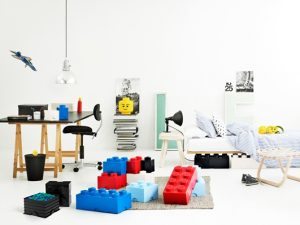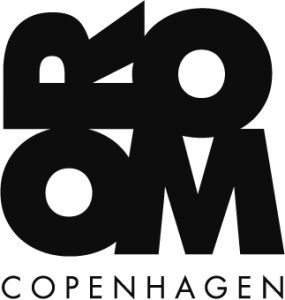By Vicki Matranga, Design Programs Coordinator
Get to know the people behind the stylish, thought-provoking designs that will be exhibited in Discover Design. This series of conversations will give you a glimpse of the inspirations, influences and ideas that go into creating the exciting products that you’ll see at the 2013 Show.

ROOM COPENHAGEN was founded in 2010 in Copenhagen, Denmark with the goal of creating exciting, functional design that makes the world a more beautiful and fun place. ROOM COPENHAGEN interprets and develops the designs of internationally renowned brands into modern design classics the home. The company currently collaborates with The LEGO Group, PANTONE UNIVERSE and Paul Frank. ROOM COPENHAGEN is a spin-off from the Plast Team group renowned for designing and producing high-quality, functional homeware products for more than 25 years.
ROOM COPENHAGEN designer Morten Russell (b. 1966) graduated from The Royal Danish Academy of Fine Arts – School of Design in 1991. He has designed furniture for the home and office, lighting, interiors and exhibitions, even elevators. His varied career includes the designs of train interiors for Danish Rail. Morten opened his own design office in 2000. His select clients included IKEA, Habitat UK, COOP Norden, Sanyei and more.
Since 2009, Morten has been the Director of Design / Art Director for ROOM Copenhagen, Inc. For ROOM COPENHAGEN, Morten has designed the LEGO storage and lunch collections, the TagStore boxes, the Plast Team Laundry collection and many parts of the Plast Team Food Storage collection.
We’re speaking with Morten Rossell – Head of Design at ROOM COPENHAGEN
Where do you find inspiration when designing new products?
Well, I am from Scandinavia – I consider only what is necessary and try to keep it simple. It is my belief that many products are over designed, and I like simple.
Are there any specific designers, places or eras that influence you?
While I appreciate all good design, I value Scandinavian designers as they design basic, clean-looking products.
Our Scandinavian design tradition is very functional and practical – actually based on the philosophies from the old Bauhaus school in Germany, from the early 1920s – “form follows function” and “less is more” as they liked to put it
This, I think, is still very much true, and is something I try to implement in all the products I design.
The Scandinavian way of life is pretty laid back and unpretentious, so if I can also add a little bit of this feeling to my products I am pleased. Simple, unpretentious products, with a touch of humour or a shot of life – that is my goal…”

How do you choose which idea to take to the next step — to product development?
It is a team effort. I make a point to listen to all involved in a project and consider what is really suitable for today’s lifestyle as well as sensible to produce.
When we decide to develop a new product, I always start out with looking at similar products on the market, both our own products as well as others to see what fits or what is cutting edge.
Mostly, I see it as my first and most important task to try and “clean up” the products I see. Many products are, in my opinion, way too complicated in their design. I can´t stop thinking about products with more rational, more simple designs, of course in a more cost effective way. Often the “only” thing I do is to get rid of the redundant parts of the product, and, in that way, I create a product that is way more simple and easier for the customer to comprehend.
How do you identify the key user audience for your products?
I’ve learned over the years if the item is properly designed from all aspects (appeal / functional / price etc.) then it will have a larger audience. Like our LEGO Storage products – people of all ages love our items – not just kids.
Is there an approach or look that joins the functionality, form or emotional appeal of your product line?
Our look is distinctly clean – our products fit a whole range of styles and uses – and we feel that in itself is an emotional appeal.

How do you see design’s importance in our industry as it moves forward?
Design has been in the home industry for a very long time – it is just in the last few years that everyone has chosen to move the “word” design to the forefront.
Where are your products manufactured?
Europe and China.
How does Discover Design help to expand your brand?
Discover Design is a good showcase for key brands with forward-thinking trend items – we are in good company.
What advice can you offer to designers working in the home goods field?
There are so many good designers… I follow them all and each has a unique value to our industry. I am honored to be among them.
When asked to describe his philosophy of design in one short phrase, Morten answers, “If I was to describe my philosophy of design, it would be ‘different, but in the cool way,’” with a wry smile.
Thank you, Morten, for sharing your approach to design with us. We are eager to see your latest interpretations of modern classics. See ROOM Copenhagen’s distinctive brand offerings at Booth S3270

Discover Design is the premier design destination at the International Home + Housewares Show. Located in the South Building, within the Dine + Design Expo, the invitation-only category features more than 100 exhibitors from around the world. Companies driven by innovation and inspired by design present distinctive products and collections in Tabletop, Gift, Textiles and Home Décor categories. Exhibitors are selected to participate by a panel of industry experts comprised of retailers, design journalists and peers. Some exhibitors appeared here last year, many are new to our Show. The Discover Design Gallery, accessible to buyers and media, features select products that are entries in the Global Innovation Award (gia) for Design. Learn more about Discover Design exhibitors and their products by checking Housewares Connect 365 at www.housewares.org


